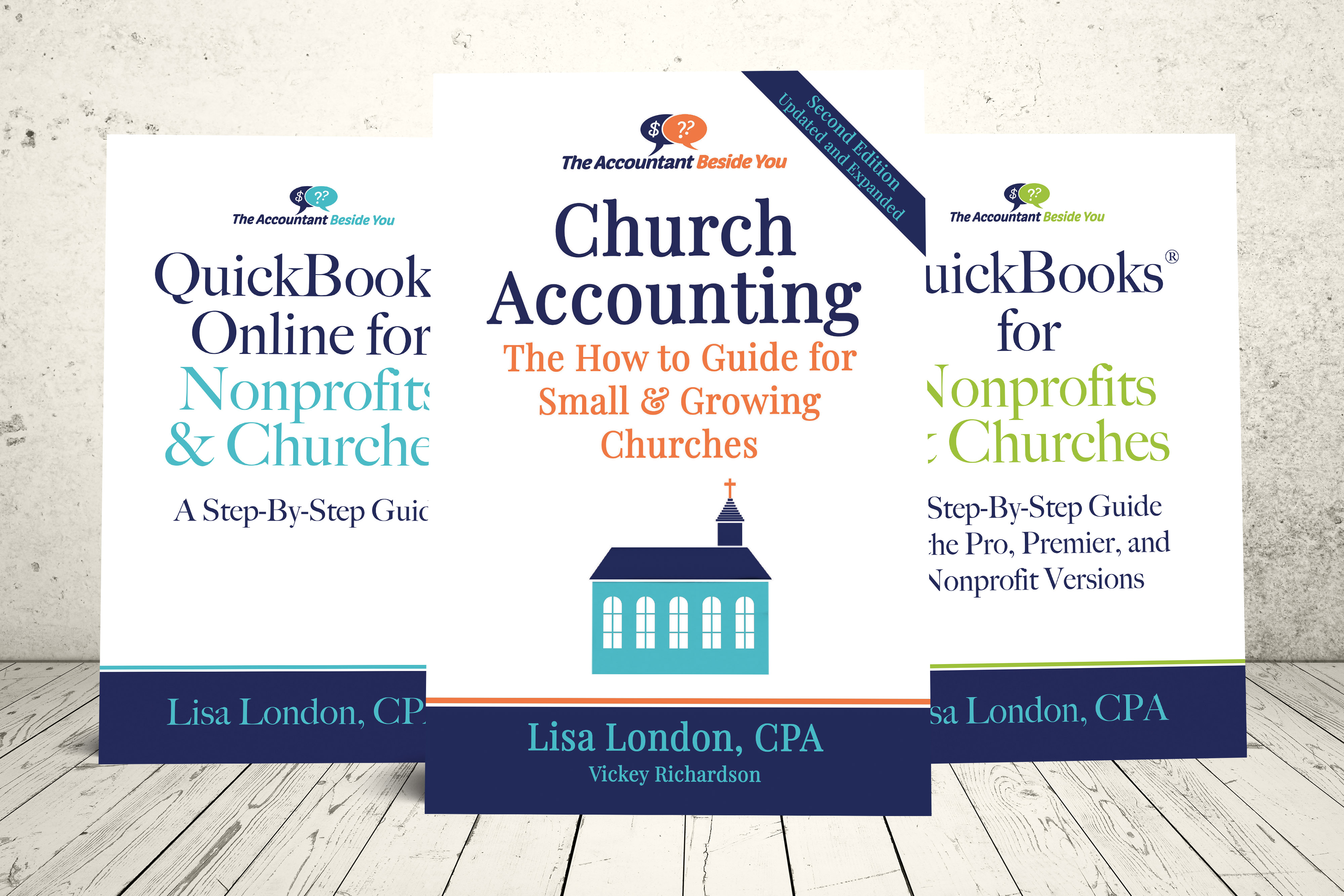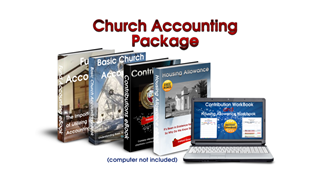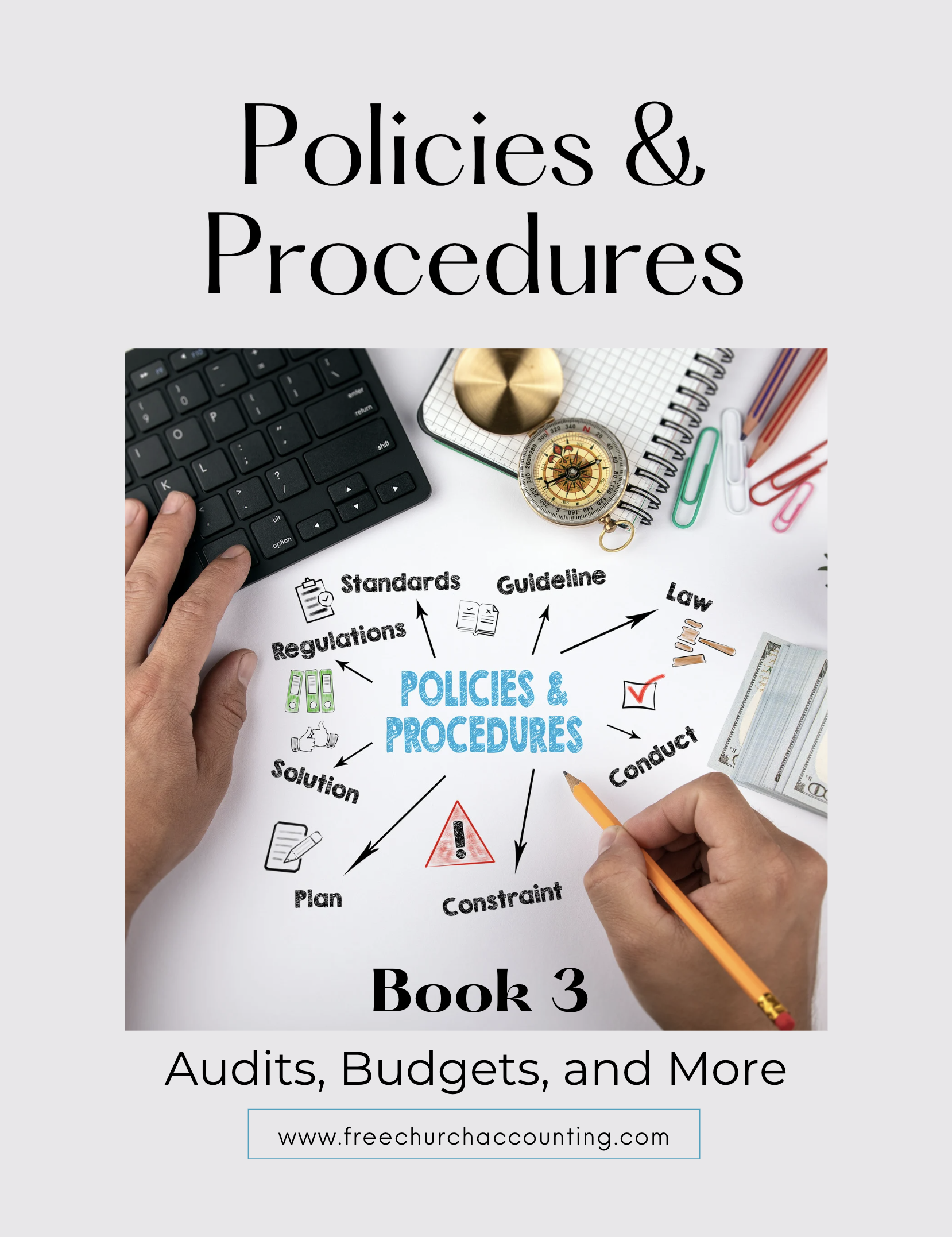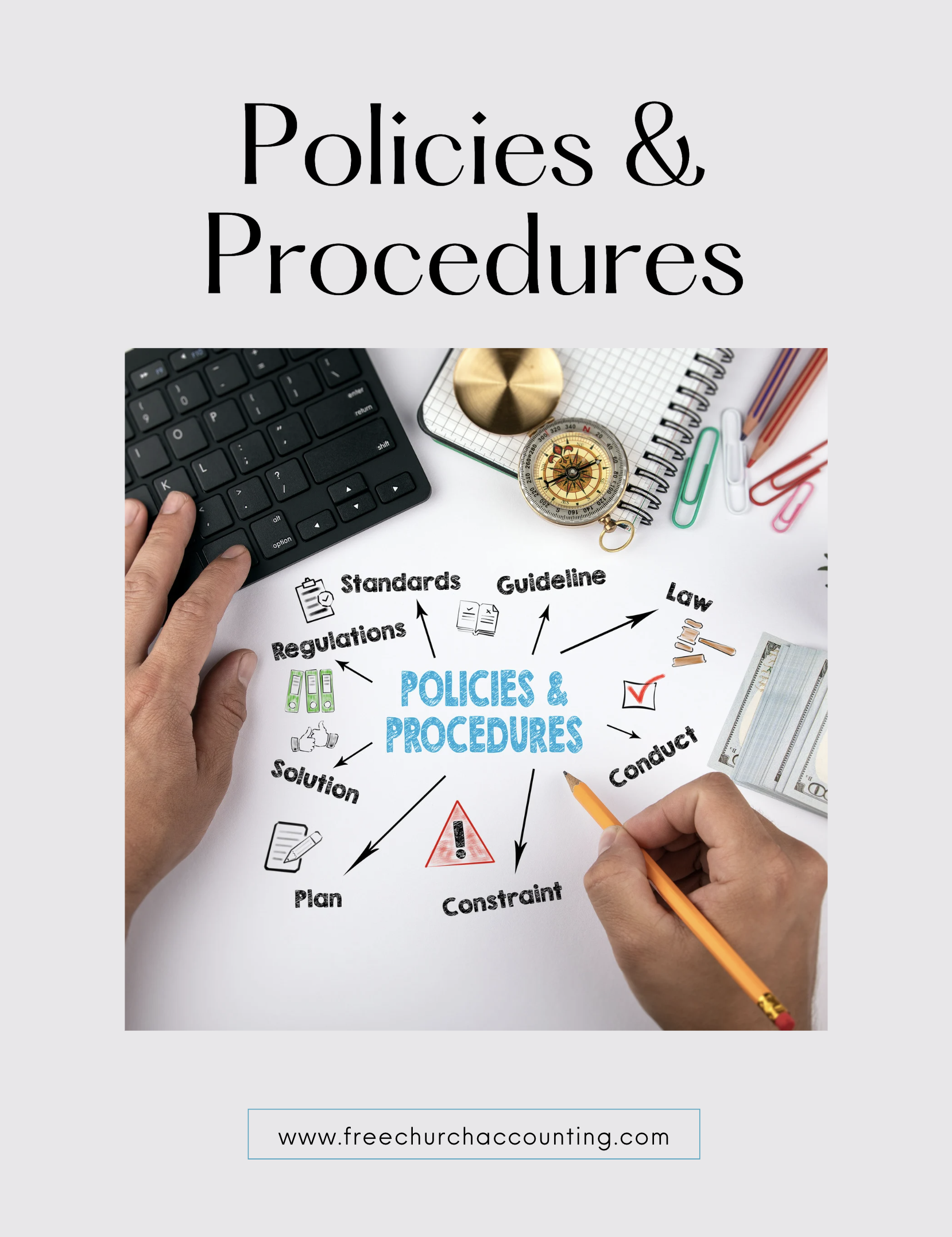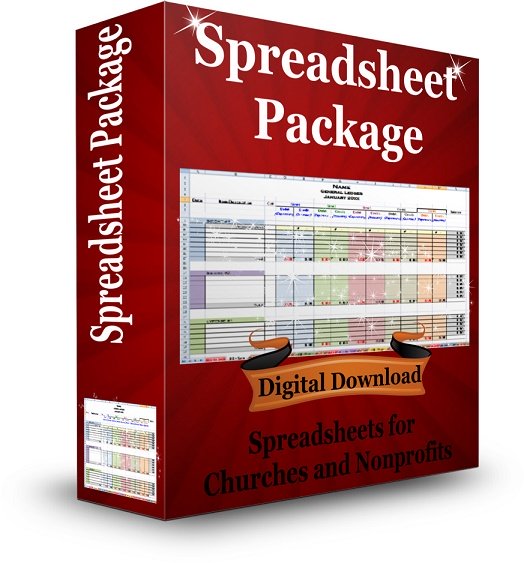Example of a Church Budget and Budget Tips
The example of a church budget below will give you an idea where to start creating a budget for your own church.
Some people dread the concept of budgeting, but you should "think of preparing an annual budget as a way to require the church to consider the priorities of its congregation.
There is a limit to the donations expected to be received, and therefore also a limit to the services that can be offered. The budgeting process can assist wit the prioritization of your church's goals." excerpt from the Church Accounting How To Guide.
The Policies and Procedures Package includes an ebook on budgets and audits. It includes details on the different types and categories of budgets and budget tips.
This ebook is included in the Policies and Procedures Package. However, you can purchase it by itself for only $7.95 by clicking the ADD TO CART button below!
The Audits, Budgets, and More ebook is also part of a larger "Policies and Procedures" Package" that is packed full of valuable information and for a limited time you can purchase all 5 ebooks and 8 policy templates for only $32.80
Example of a church budget...
When using the following example of a budget, keep a few key points in mind:
- Some churches may use all these categories and some may use just a few of them.
- Every church is different and unique. This example of a church budget is simply a guide to aid in setting up a budget.
Income:
Pledges
$60,000
Special Offerings
$30,000
Cash Plate Offerings
$20,000
Sunday School Offerings
$3,000
Restricted Gifts
$25,000
Interest & Dividend Income
$5,000
Rental Income
$3,000
Miscellaneous Activities
$14,000
Total
$160,000
Expenditures:
Pastor-Related
Salary
Housing Allowance
Educational Allowance
Pension
$20,000
$10,000
$1,000
$5,000
Pastor-Related Subtotal:
$36,000
Administration
Salary
Supplies
Property Maintenance
Utilities
Insurance
Telephone
Postage
Literature
Flowers
Computer-new
Bus Expense
Publicity
$23,000
$5,000
$6,000
$4,000
$3,000
$700
$1,000
$300
$200
$3,000
$2,800
$1,000
Administration Subtotal:
$50,000
Program/Ministries
Youth
Music
Worship
$5,000
$4,000
$2,000
Program/Ministries Subtotal:
$11,000
Missions
Local
Foreign
$8,000
$12,000
Missions Subtotal:
$20,000
Debt Retirement Fund
Building Fund
Contingency Reserve
$5,000
$35,000
$3,000
Total
$160,000
The following Spreadsheet Package contains an accounting workbook that will not only track income and expenses, but has a budget worksheet. The budget worksheet allows you to compare your actual year to date income and expenses to your budget at any point during the year...
Spreadsheet Package
The Spreadsheet Package includes:
- Contribution Tracking Workbook
- 5 Fund Automatic Accounting Workbook
- Bank Reconciliation Workbook
- Collection Count Sheet
- Mileage Log Workbook
- Much more - Click here for details
PLUS a Word document with 3 examples of contribution statements for cash, non cash, and quid pro quo donations that you can customize for your own use!
Forecasts...
No matter how carefully and thoughtfully you work through your budget process, situations can change. To help you anticipate what these changes will mean for your church, you may want to prepare a forecast.
Budgets are typically created annually and stay stable throughout the year. Forecasts are used as a "what if" tool and are useful when change is anticipated. A forecast is not meant to replace a budget, but to give the administration tools to understand and plan for the changes before they occur. (taken from Church Accounting: How To Guide)
See step by step instructions on creating and developing a forecast in the Church Accounting: How To Guide. The author details how to set up a spreadsheet you can use to create an effective forecast in Chapter 8 or how to take the accounting spreadsheets offered on this site and add three columns to the Budget to Actual worksheet to make a very effective forecasting tool.

Coupon!
Here is a 10% discount code for all the ebooks, spreadsheets, and packages on this site:
FCA
Note: click on "PACKAGES" in the top navigation bar for a list of all of the ebook and spreadsheet packages on this site!
